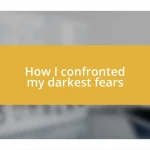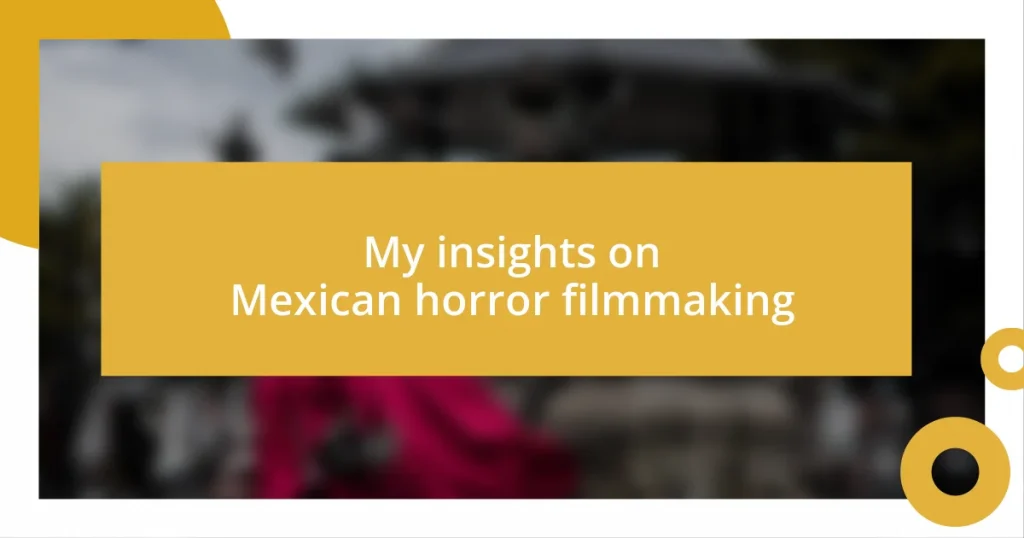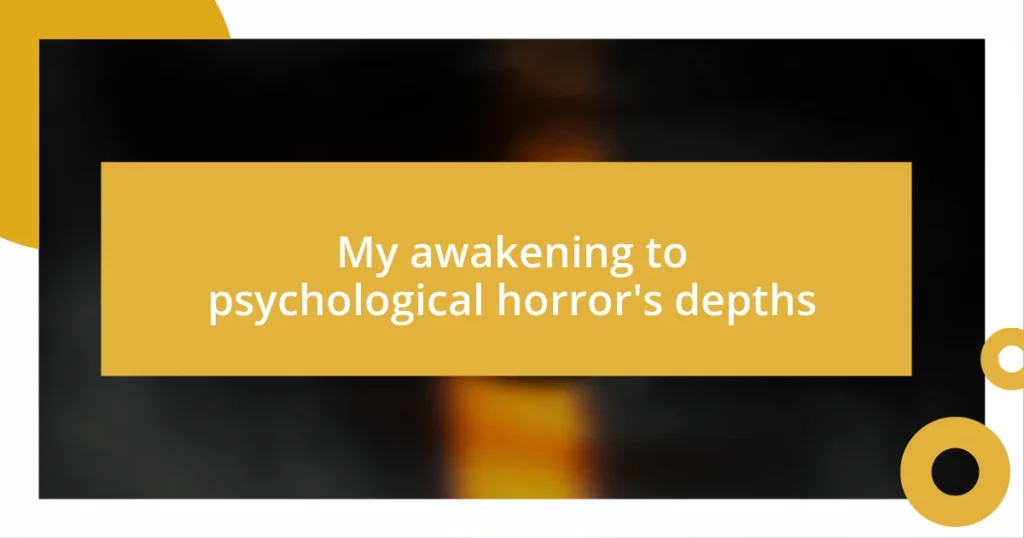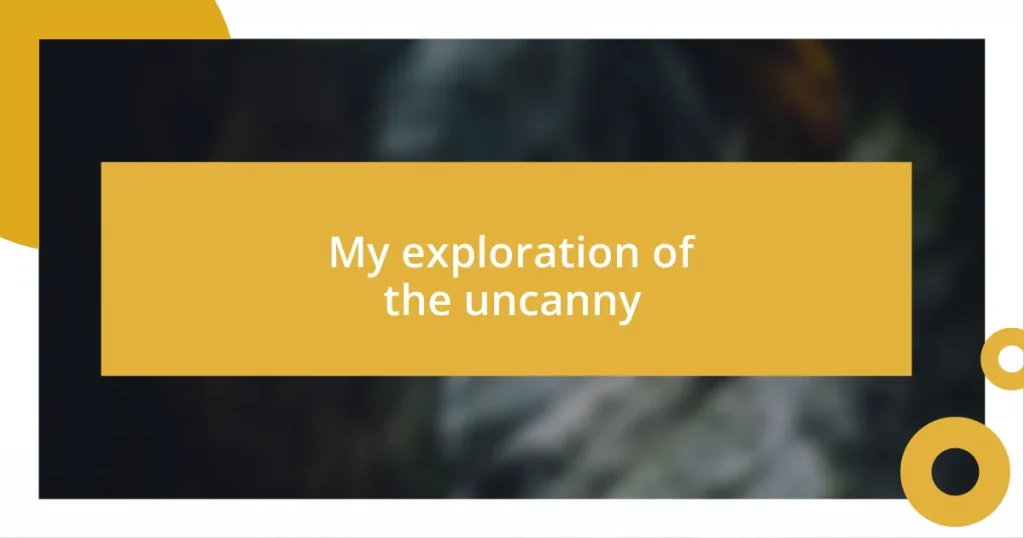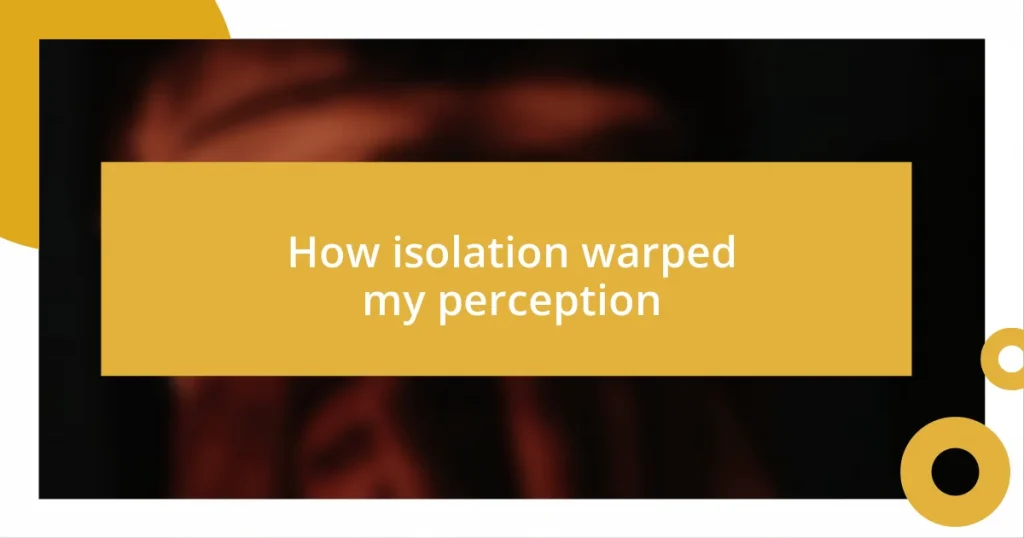Key takeaways:
- Mexican horror films uniquely blend folklore and social issues, emphasizing psychological terror over graphic violence to reflect societal fears.
- Influential filmmakers like Guillermo del Toro, Jorge Michel Grau, and Issa López have redefined the genre, incorporating themes of trauma and humanity into their narratives.
- The genre serves as a cultural mirror, using rich folklore to explore personal and societal struggles, ultimately fostering empathy and deeper understanding of human experiences.
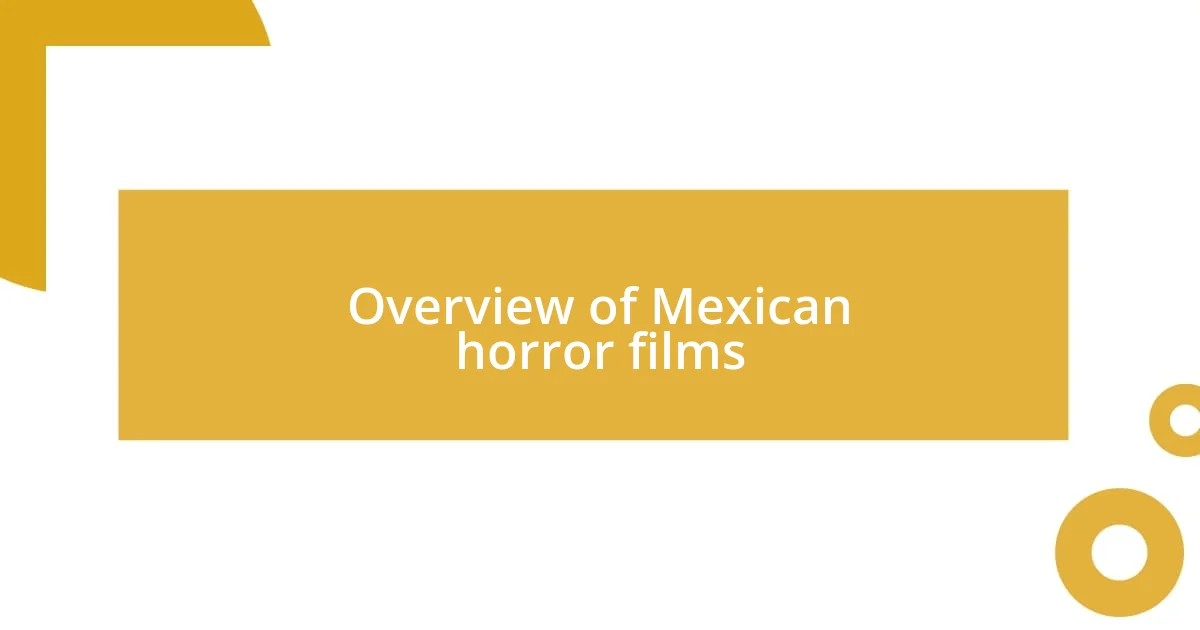
Overview of Mexican horror films
Mexican horror films have a unique flair that distinguishes them from mainstream horror. They often weave folklore and local superstitions into their narratives, allowing the viewer to experience a rich cultural context. I remember watching “La Llorona” as a child and feeling chills not just from the eerie storyline but also from the stories my grandmother told me about the weeping woman of Mexican folklore.
The genre has seen a resurgence in recent years, with directors pushing boundaries and exploring themes of social issues intertwined with horror elements. Have you noticed how films like “Tigers Are Not Afraid” reflect the darker aspects of reality while still capturing the audience’s imagination? For me, these films are more than just scare tactics; they’re a mirror of societal fears, touching on subjects that resonate deeply with viewers.
Additionally, Mexican horror often emphasizes psychological terror over gore, creating a deeply unsettling atmosphere. I can still recall the suspense hanging in the air during “The Bone Box.” This film left me pondering the fragility of life and how entities from beyond can influence our personal narratives. It’s this blend of psychological depth and cultural richness that makes Mexican horror films a fascinating subject worth exploring.
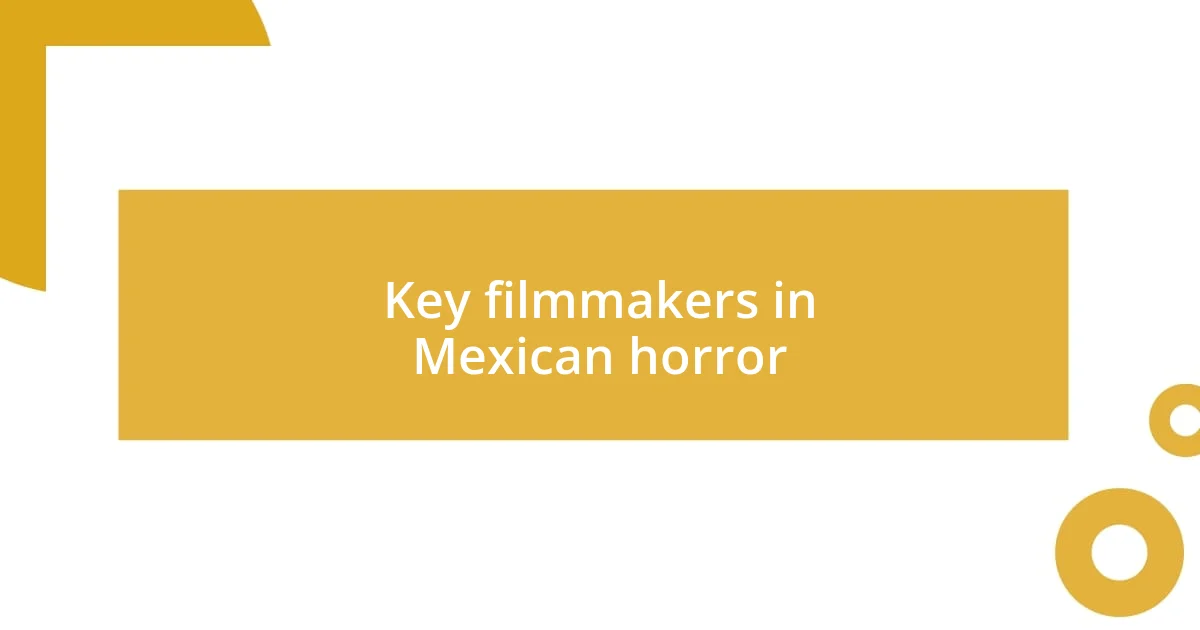
Key filmmakers in Mexican horror
One of the most influential figures in the realm of Mexican horror is Guillermo del Toro. His films, like “Cronos” and “The Devil’s Backbone,” merge artistry with horror, showcasing his ability to create haunting atmospheres enriched by mythology. I remember the first time I watched “Pan’s Labyrinth”; it struck me how he masterfully blended horror with heart, making the viewer feel both dread and sympathy for his characters.
Next on my list is Jorge Michel Grau, known for “We Are What We Are.” This film dives into themes of family and survival, wrapped in a chilling narrative about cannibalism. I found his work striking for how it challenges conventional horror tropes, offering a raw, character-driven experience that resonates long after the credits roll. It’s an excellent reminder that horror can highlight fundamental human struggles.
Lastly, there’s Issa López, who shook the genre with “Tigers Are Not Afraid.” The way she intertwines childhood innocence with the brutality of the drug war is hauntingly beautiful. I felt an emotional tug as I followed the dystopian journey of the children in her film, evoking real-life fears many face today. This intersection of horror and reality offers an intimate look into Mexico’s struggles, making her work particularly impactful.
| Filmmaker | Key Films |
|---|---|
| Guillermo del Toro | Cronos, Pan’s Labyrinth, The Devil’s Backbone |
| Jorge Michel Grau | We Are What We Are |
| Issa López | Tigers Are Not Afraid |
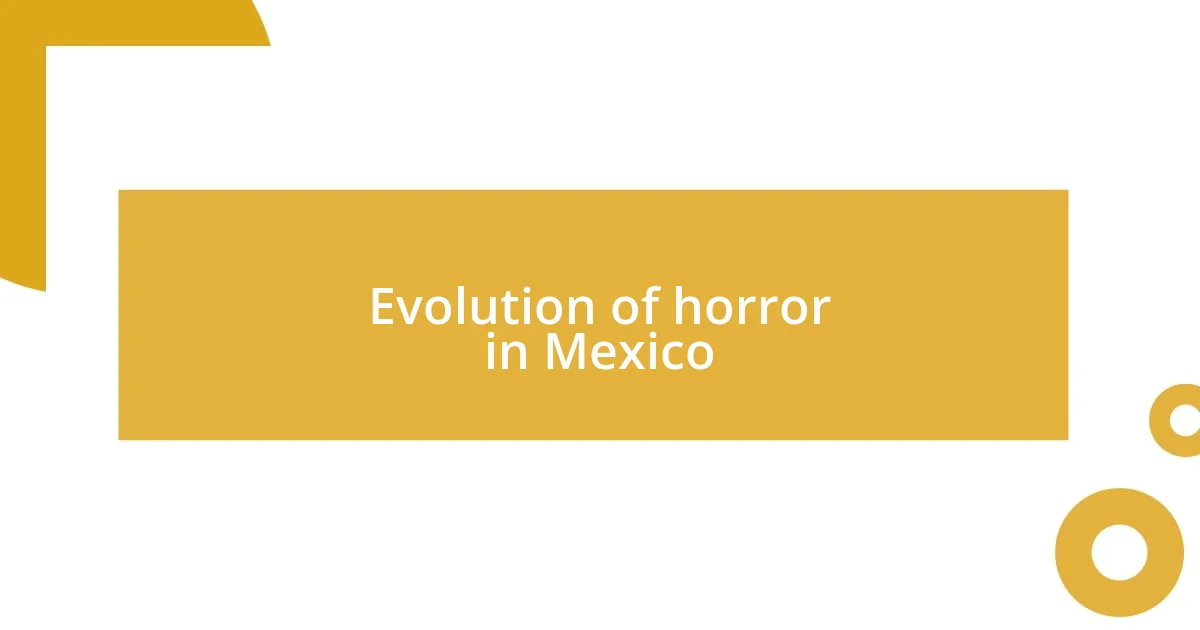
Evolution of horror in Mexico
The evolution of horror in Mexico has been a fascinating journey, marked by significant cultural milestones and shifts in storytelling. Early films like “Los Olvidados” introduced a social dimension to horror, using the genre to comment on social issues, especially poverty and violence. I still remember the first time I encountered this film; it opened my eyes to how horror could reflect real societal dilemmas, leaving a lasting impact long after viewing.
- The Golden Age (1930s-1950s): Classic monsters mixed with Mexican folklore.
- The ’70s and ’80s: Introduced more graphic violence, influenced by international horror trends.
- Contemporary Era: Modern films increasingly explore complex themes, such as trauma and identity, blending horror with social commentary.
Recently, the genre has shifted again towards psychological horror, as seen in films like “The Witch” or “Midsommar,” which remind me of the unsettling tales that my family shared at night—stories that lingered in my mind long after they were told. I feel this reflective evolution showcases the underlying fears and realities that reshape the fabric of Mexican society, creating a rich tapestry that continues to captivate audiences both at home and abroad.
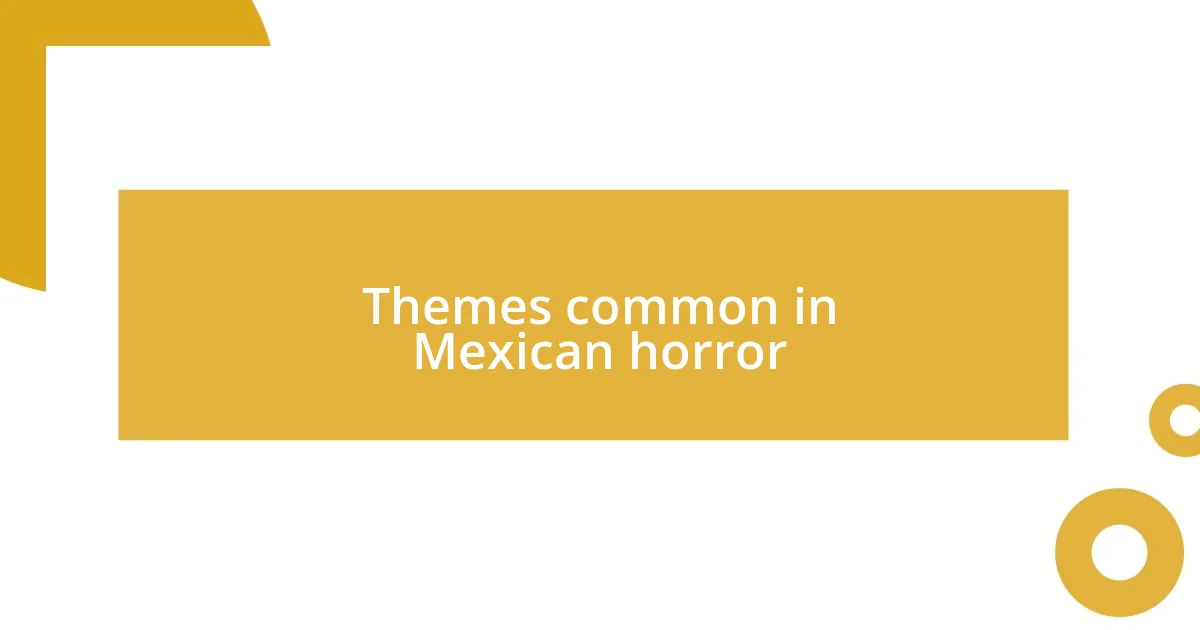
Themes common in Mexican horror
Themes common in Mexican horror often dissect societal issues and cultural anxieties, giving the genre a unique depth. For instance, many films highlight themes of violence and survival, reflecting the realities of life in Mexico. When I first watched “We Are What We Are,” it struck me how the family dynamics combined with a backdrop of cannibalism make for a chilling, yet poignant examination of desperation.
Another prevalent theme is the intersection of folklore and modern societal dilemmas. I find it fascinating how filmmakers like Guillermo del Toro weave traditional myths into contemporary narratives, creating a haunting yet relatable tapestry that resonates with viewers. It makes me think about how these stories evolve, reflecting not just personal fears but collective cultural experiences.
Mexican horror is also rich in the exploration of identity and trauma. Movies that tackle personal and societal pain often leave a profound impression on me. For example, Issa López’s “Tigers Are Not Afraid” intertwines childhood innocence with harsh social realities, making me question how much of our early experiences shape who we become as adults. Isn’t it gripping how horror can serve as a lens through which we view our histories? This thematic resonance is what keeps me coming back to Mexican horror time and again.

Influential films and their impact
One of the standout films that shaped Mexican horror is “Cronos,” directed by Guillermo del Toro in the mid-1990s. I remember watching it for the first time and being captivated by the way it blended gothic elements with a unique twist on the vampire mythos. This film not only put Mexican horror on the global map but also opened the door for a new wave of filmmakers to explore darker narratives that resonate with universal fears. Can you feel the tension of that beautiful blend of horror and art?
Another influential film, “El Topo,” created by Alejandro Jodorowsky, shook the foundations of traditional storytelling in horror. I find it fascinating how it incorporated bizarre imagery and philosophical concepts that challenged viewers’ perceptions while leaving them pondering life’s deeper questions. The impact of this film was profound; it encouraged a generation of filmmakers to step outside genre constraints and explore narratives that questioned societal norms. I often wonder how many aspiring directors were inspired by its audacity.
Then there’s “Tigers Are Not Afraid” by Issa López, which I consider a modern masterpiece. It captures the fragility of childhood against a backdrop of violence and loss in a way that is haunting yet deeply humanizing. Whenever I reflect on the resilience of the child characters, I can’t help but marvel at how horror can elevate stories of survival into profound insights about human strength. Isn’t it remarkable how these films have paved the way for nuanced discussions about trauma in a genre often dismissed as mere entertainment?
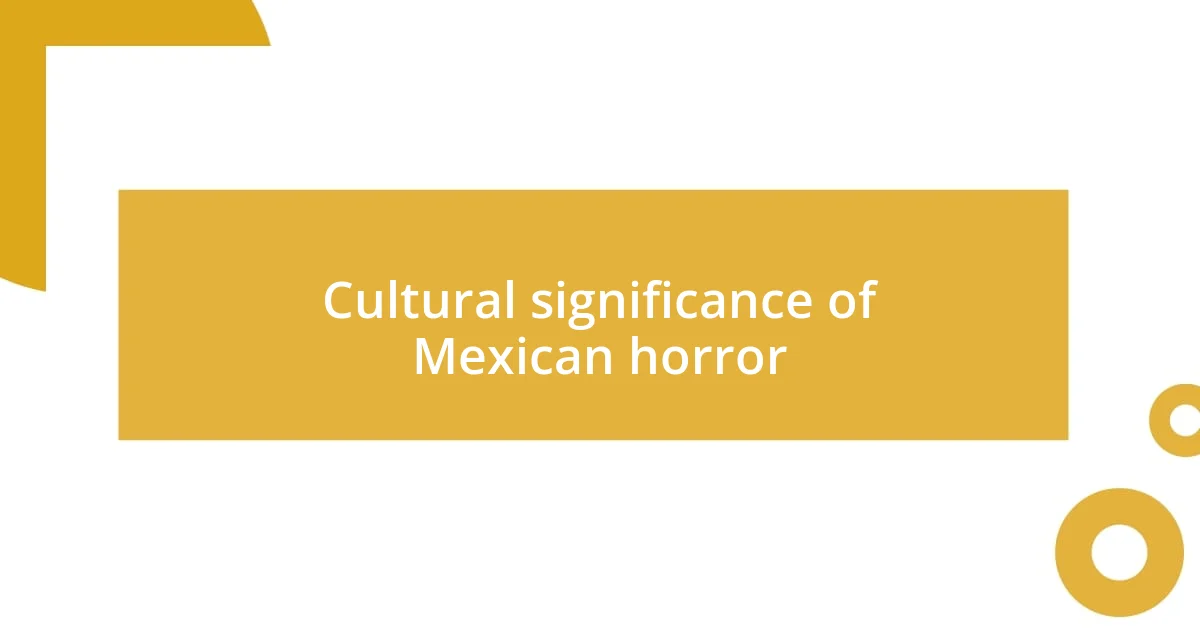
Cultural significance of Mexican horror
The cultural significance of Mexican horror lies in its ability to address and reflect the complex realities of everyday life. When I watch films from this genre, I can’t help but feel a deep connection to the struggles portrayed on screen. They often serve as a mirror to societal issues, amplifying voices that are rarely heard, and that urgency resonates with me personally. Isn’t it powerful how horror can expose the darker corners of our societies, encouraging discussions that might otherwise remain taboo?
Moreover, Mexican horror draws heavily on rich folklore, merging the supernatural with historical narratives that are integral to the national identity. Take, for example, the way spectral figures are woven into stories about loss and longing. I recall watching a film that played with the legend of La Llorona, capturing both fear and cultural heritage in a haunting symphony. This artistic blend invites viewers to confront their fears, intertwining personal histories with collective mythos, which makes me wonder how those tales shape our understanding of grief and memory.
Finally, the emotional depth in Mexican horror often transcends traditional genre boundaries. I’ve observed how these films can evoke empathy and compassion, revealing the humanity in even the most horrific circumstances. For instance, I was deeply moved by a character’s journey through trauma, as it illuminated the resilience of the human spirit amid chaos. In this way, Mexican horror doesn’t just entertain; it molds narratives of survival and hope, prompting me to reflect on the complexities of our shared experiences. How can something so terrifying also foster such profound understanding?





